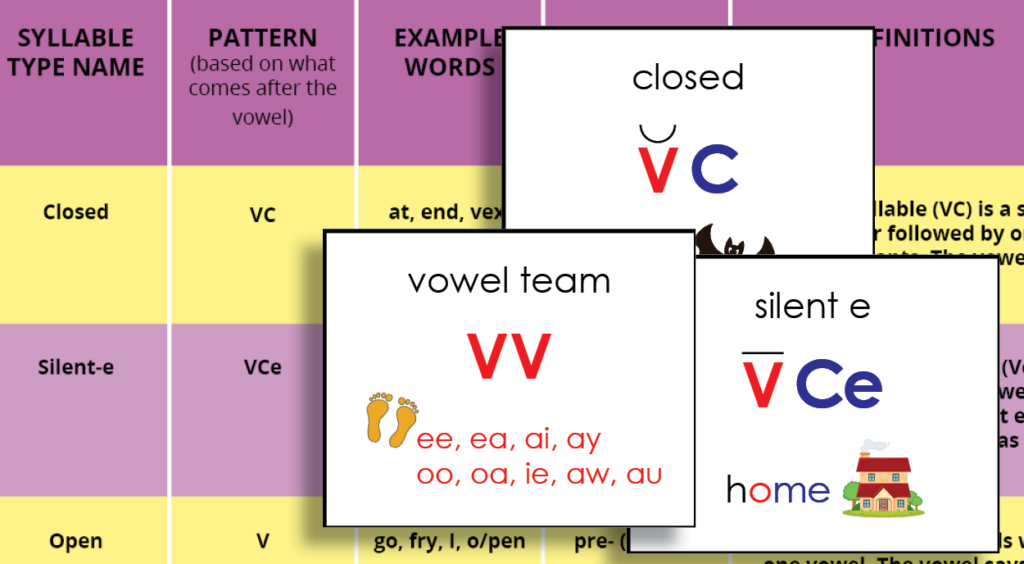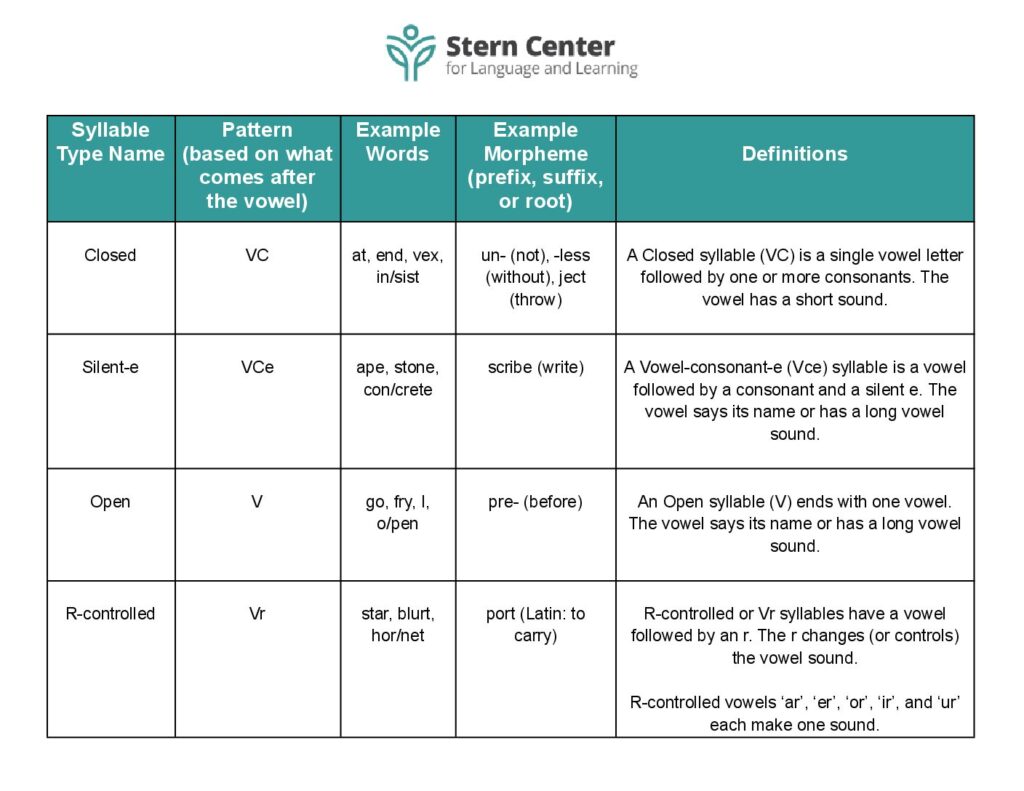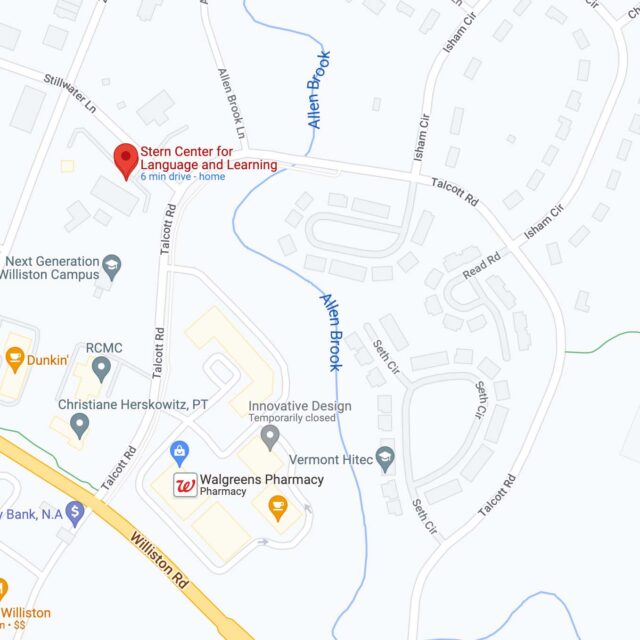
By Leigh Buettler, M.S.Ed., Director of Professional Learning and Peggy Price, M.Ed., F/OGA, Director of the Stern Center Orton-Gillingham Institute
As we celebrate the start of the 2024 calendar year and refocus our students and ourselves on the work ahead, we’d like to share these ideas for how you can incorporate syllable-type instruction into your literacy instruction. We teach syllable types so our students are able to read and spell words with greater accuracy.
We know English is a complex language – its complexity has become the topic of books, cartoons, sitcoms, stand-up routines, and more. And yet, most of the English language is predictable if we understand its structure. Let’s explore one important feature of how words are spelled and pronounced based on syllable types.
If we come across an unfamiliar word that contains the letter ‘a,’ how do we know if the sound is /a/ (as in cat), /A/ (as in cape), /ar/ (as in car)? There is actually a reliable pattern to determine the vowel sound based on syllable types.
For a fun experiment, read the names of some of these villains from Star Wars – Kylo Ren, Snoke, Darth Maul. Even if you’ve never watched any of those movies or heard of these characters, you read them correctly. Skilled readers effortlessly recognize words, even words they have never seen before, if they have internalized what the vowel sound will be due to the structure of the word. While some individuals can internalize this word structure with little to minimal instruction, developing readers of any age benefit from direct, explicit instruction to demystify why words are read and spelled the ways that they are.
Structured Literacy, pioneered by the founders of the Orton-Gillingham Approach and the backbone of our professional learning here at the Stern Center, systematically and explicitly teaches syllable types to students within a logical scope and sequence. You can read and download the definitions and examples of each of the six different syllable types below:

Note: The structure of the English language is far more complicated than these six syllable types, and there are always a few exceptions to the syllable type pattern, but hopefully this is a helpful start for educators and families looking to help their children crack the code and develop a love of reading and writing.
If you’re interested in a review or deeper dive into syllable types, syllabication, and spelling patterns, sign up for our one-day workshop, Orton-Gillingham: Update & Refresh on January 23rd and/or Orton-Gillingham: Focus on Level II, Vowel Teams, & Beyond on January 31st with Peggy Price!
In the meantime, check out the flashcard resource that Peggy created when she was a 4th – 5th grade teacher at a school for students with learning disabilities. All participants in our OG courses receive helpful electronic teaching resources like this poster as part of their coursework with the Stern Center.
Happy 2024!
Leigh Buettler, Director of Professional Learning
Peggy Price, F/OGA, Director of the Stern Center Orton-Gillingham Institute
